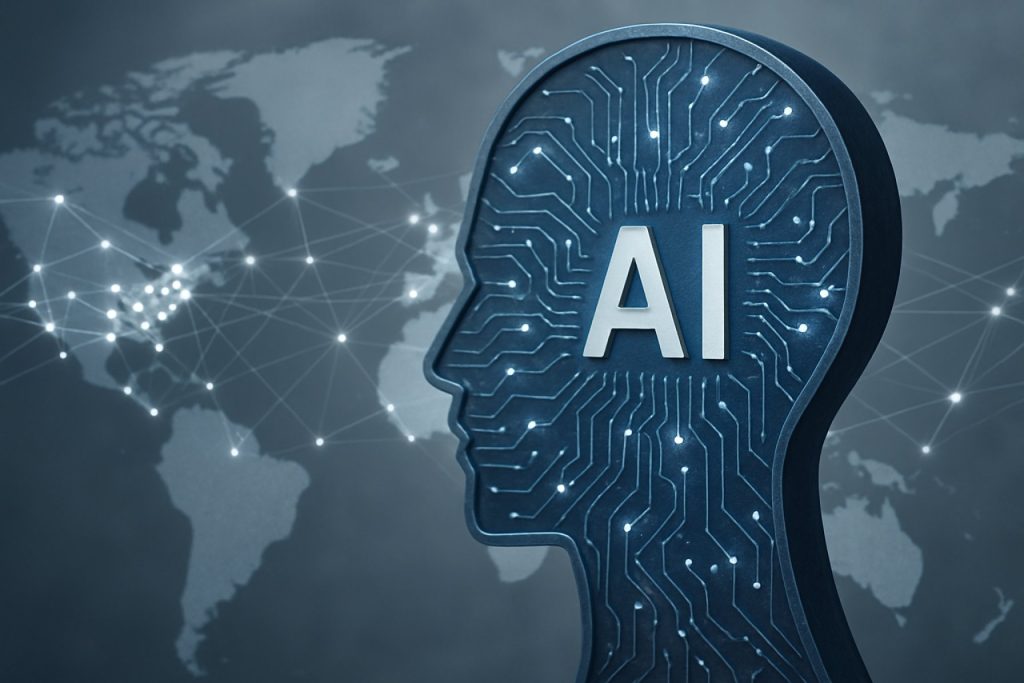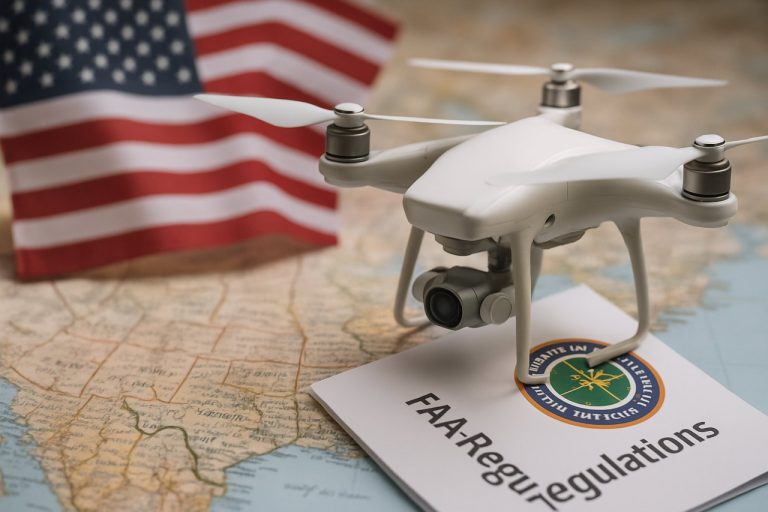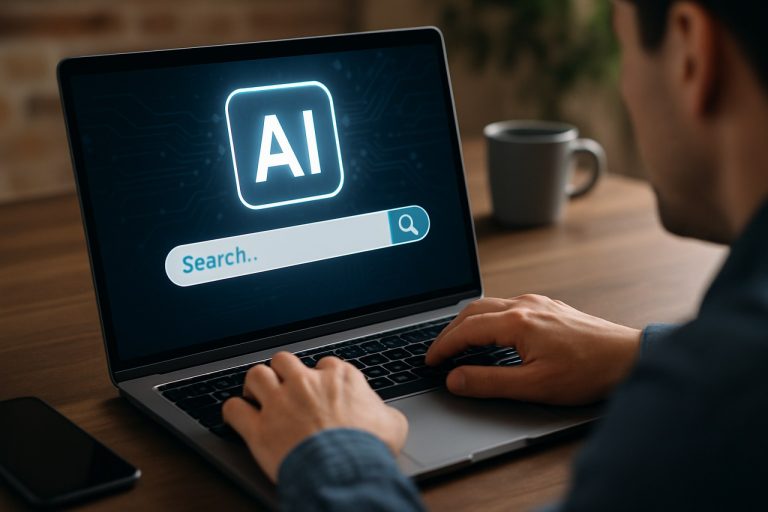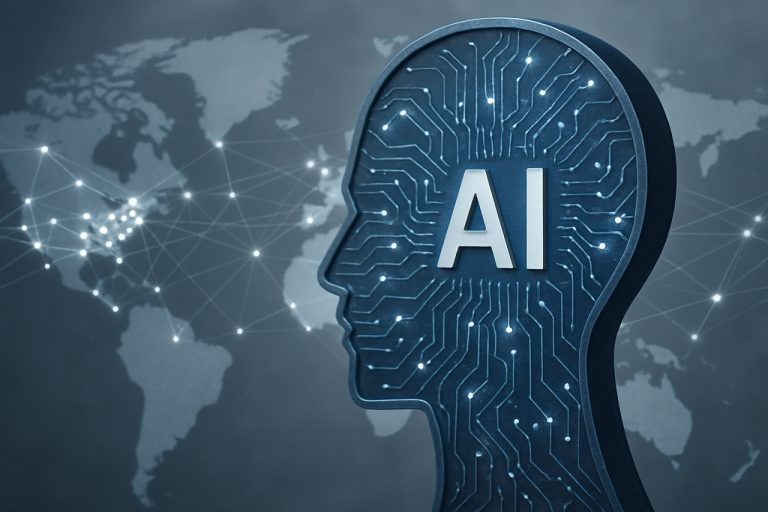
Unveiling the Next Wave: Global Shifts and Strategic Insights in Artificial Intelligence Adoption
- AI Market Landscape and Key Drivers
- Innovations and Evolving Technologies in AI
- Industry Players and Strategic Positioning
- Projected Expansion and Investment Hotspots
- Geographic Trends and Localized Adoption
- Anticipated Developments and Strategic Directions
- Barriers, Risks, and Emerging Possibilities
- Sources & References
“Artificial Intelligence (AI) is entering an era of explosive growth and widespread adoption.” (source)
AI Market Landscape and Key Drivers
The global adoption of artificial intelligence (AI) is accelerating rapidly, with projections indicating a transformative impact across industries between 2025 and 2030. According to McKinsey, AI adoption rates among organizations have more than doubled since 2017, and this momentum is expected to continue as generative AI and machine learning technologies mature.
- Market Growth: The global AI market is forecast to reach $826.7 billion by 2030, up from $241.8 billion in 2023, representing a compound annual growth rate (CAGR) of 21.6% (Statista).
- Regional Adoption: North America and Asia-Pacific are leading in AI adoption, with Europe rapidly catching up. The Asia-Pacific region, driven by China, India, and Japan, is expected to see the fastest growth, with a projected CAGR of 24% through 2030 (Precedence Research).
- Industry Penetration: Sectors such as healthcare, finance, retail, and manufacturing are at the forefront of AI integration. For example, the healthcare AI market alone is expected to surpass $187 billion by 2030 (Fortune Business Insights).
- Key Drivers: The main factors fueling global AI adoption include the proliferation of big data, advancements in cloud computing, increased investment in AI research, and the growing demand for automation and personalized experiences (Gartner).
- Workforce Impact: By 2030, AI is expected to automate up to 30% of current work hours, reshaping job roles and requiring significant workforce reskilling (McKinsey).
In summary, the period from 2025 to 2030 will see AI become a foundational technology globally, with adoption driven by technological advancements, competitive pressures, and the pursuit of operational efficiencies. Organizations that strategically invest in AI capabilities are likely to gain significant advantages in productivity, innovation, and customer engagement.
Innovations and Evolving Technologies in AI
As artificial intelligence (AI) continues to mature, global adoption trends between 2025 and 2030 are expected to accelerate, driven by technological advancements, increased investment, and expanding use cases across industries. According to Gartner, the worldwide AI software market is projected to reach $297 billion by 2027, with continued growth anticipated through 2030 as organizations integrate AI into core business processes.
- Enterprise Integration: By 2030, over 80% of enterprises are expected to have adopted AI-driven automation and decision-making tools, up from 35% in 2022 (McKinsey).
- Generative AI Expansion: Generative AI, such as large language models and image generators, will see widespread adoption in content creation, customer service, and software development. IDC forecasts that by 2030, generative AI will account for 30% of all AI spending (IDC).
- AI in Emerging Markets: Adoption rates in Asia-Pacific, Latin America, and Africa are expected to outpace those in North America and Europe, as governments and businesses leverage AI for economic growth and digital transformation (PwC).
- Regulatory Evolution: The global regulatory landscape will evolve, with the European Union’s AI Act and similar frameworks influencing responsible AI deployment and cross-border collaboration (EU AI Act).
- Sector-Specific Growth: Healthcare, finance, manufacturing, and retail will lead AI adoption, with applications ranging from predictive analytics and personalized medicine to supply chain optimization and fraud detection (Statista).
Looking ahead, the convergence of AI with other emerging technologies—such as edge computing, quantum computing, and the Internet of Things (IoT)—will further accelerate adoption and unlock new business models. As organizations worldwide embrace AI, the focus will shift from experimentation to large-scale, value-driven implementation, shaping the global economy and workforce for the next decade.
Industry Players and Strategic Positioning
The global artificial intelligence (AI) landscape is rapidly evolving, with industry players intensifying their strategic positioning to capture emerging opportunities between 2025 and 2030. As AI adoption accelerates across sectors, leading technology firms, startups, and regional players are deploying differentiated strategies to secure market share and drive innovation.
- Tech Giants’ Dominance: Companies such as Microsoft, Google, IBM, and Amazon continue to lead global AI adoption. Their strategies focus on expanding cloud-based AI services, investing in foundational models, and forming strategic partnerships. For example, Microsoft’s investment in OpenAI and Google’s Gemini platform exemplify the race to deliver advanced generative AI capabilities at scale.
- Regional Expansion and Localization: Chinese firms such as Baidu, Tencent, and Alibaba are intensifying their focus on domestic and emerging markets, leveraging government support and localized data to develop AI solutions tailored to regional needs (McKinsey).
- Startups and Niche Innovators: The AI startup ecosystem is thriving, with companies like Anthropic, Cohere, and Databricks raising significant capital to develop specialized AI models and tools. These firms are often more agile, targeting industry-specific applications such as healthcare, finance, and manufacturing.
- Sectoral Adoption: According to Gartner, the global AI software market is projected to reach $297 billion by 2027, with the fastest adoption in sectors like healthcare, retail, and financial services. Strategic alliances between technology providers and industry incumbents are expected to accelerate vertical-specific AI integration.
- Geopolitical and Regulatory Positioning: The US, China, and the EU are shaping global AI standards through regulatory frameworks and investment incentives. The EU’s AI Act and China’s AI governance guidelines are influencing how companies position themselves for compliance and cross-border collaboration (World Economic Forum).
Between 2025 and 2030, the competitive landscape will be defined by the ability of industry players to scale AI responsibly, localize solutions, and navigate regulatory complexities, with strategic partnerships and innovation ecosystems playing a pivotal role in global AI adoption trends.
Projected Expansion and Investment Hotspots
Between 2025 and 2030, global AI adoption is expected to accelerate rapidly, driven by technological advancements, increased data availability, and growing enterprise demand. According to McKinsey, over 50% of organizations worldwide had already integrated at least one AI capability by 2023, and this figure is projected to surpass 80% by 2030. The global AI market size, valued at approximately $196 billion in 2023, is forecasted to reach $826.7 billion by 2030, growing at a CAGR of 21.6% (Grand View Research).
Key regions and sectors are emerging as investment hotspots:
- North America: The United States remains the global leader in AI investment, with significant funding directed toward generative AI, healthcare, and autonomous systems. The Biden administration’s AI Executive Order is expected to further stimulate public and private sector investments.
- Asia-Pacific: China is rapidly closing the gap, with government-backed initiatives aiming to make the country a global AI powerhouse by 2030. The region is seeing robust growth in smart manufacturing, fintech, and urban infrastructure (South China Morning Post).
- Europe: The EU’s AI Act is shaping a regulatory environment that encourages responsible AI innovation, with Germany, France, and the UK leading in AI research and enterprise adoption.
Sector-wise, the most significant AI investments are projected in:
- Healthcare: AI-driven diagnostics, drug discovery, and personalized medicine.
- Financial Services: Fraud detection, algorithmic trading, and customer service automation.
- Manufacturing: Predictive maintenance, quality control, and supply chain optimization.
- Retail: Personalized marketing, inventory management, and customer experience enhancement.
As AI technologies mature, emerging markets in Latin America, the Middle East, and Africa are also expected to attract increased investment, particularly in sectors like agriculture, logistics, and public services (Deloitte).
Geographic Trends and Localized Adoption
Global adoption of artificial intelligence (AI) is expected to accelerate significantly between 2025 and 2030, with distinct geographic trends shaping the landscape. According to McKinsey, AI adoption rates among businesses worldwide reached 55% in 2023, and projections indicate this figure could surpass 75% by 2030 as organizations increasingly integrate AI into core operations.
- North America: The United States and Canada are expected to maintain leadership in AI innovation and investment. The U.S. government’s AI initiatives and robust venture capital ecosystem are driving rapid enterprise adoption, particularly in finance, healthcare, and manufacturing. By 2030, North America is projected to account for over 35% of global AI market revenue (Statista).
- Europe: The European Union is focusing on ethical AI and regulatory frameworks, such as the AI Act, to foster responsible adoption. Germany, France, and the UK are leading in industrial and public sector AI deployments. Europe’s AI market is forecast to grow at a CAGR of 28% through 2030 (GlobeNewswire).
- Asia-Pacific: China is rapidly closing the gap with the U.S., driven by government investment and a large talent pool. The Chinese government’s blueprint aims for global AI leadership by 2030. India, Japan, and South Korea are also scaling AI adoption in sectors like retail, logistics, and agriculture. The Asia-Pacific region is expected to see the fastest AI market growth, with a projected CAGR of 35% (Mordor Intelligence).
- Rest of the World: Latin America, the Middle East, and Africa are experiencing gradual AI adoption, primarily in fintech, energy, and public services. Governments are launching national AI strategies, but challenges such as infrastructure and skills gaps persist (Brookings).
Overall, global AI adoption from 2025 to 2030 will be shaped by regional policy, investment, and sectoral priorities, with North America and Asia-Pacific leading in scale and innovation, while Europe emphasizes regulation and responsible use.
Anticipated Developments and Strategic Directions
Between 2025 and 2030, global AI adoption is expected to accelerate, driven by technological advancements, increased investment, and evolving regulatory frameworks. According to Gartner, the worldwide AI software market is projected to reach $297 billion in 2025, up from $124 billion in 2022, reflecting a compound annual growth rate (CAGR) of over 19%. This growth is underpinned by widespread enterprise adoption, with sectors such as healthcare, finance, manufacturing, and retail leading the charge.
- Sectoral Expansion: The McKinsey Global Survey indicates that by 2030, AI will be embedded in 70% of companies’ business processes, with generative AI tools becoming standard in knowledge work, customer service, and product development.
- Regional Dynamics: North America and China are expected to remain at the forefront of AI innovation and deployment. The Statista forecast suggests that China’s AI market could surpass $61 billion by 2025, while the U.S. continues to attract the largest share of global AI investment.
- Investment and Talent: Global private investment in AI reached $91.9 billion in 2022 and is anticipated to grow further as organizations prioritize AI-driven transformation (Stanford AI Index 2023). The demand for AI talent is also expected to intensify, prompting governments and enterprises to invest in upskilling and education initiatives.
- Regulatory Evolution: The period will see the maturation of AI governance, with the European Union’s AI Act and similar frameworks in the U.S. and Asia shaping responsible AI deployment (European Commission).
Strategically, organizations are expected to focus on integrating AI into core operations, leveraging AI for competitive differentiation, and building robust data infrastructures. The convergence of AI with other technologies—such as IoT, edge computing, and quantum computing—will further expand AI’s impact across industries. As AI adoption becomes ubiquitous, ethical considerations, transparency, and explainability will be central to sustaining trust and unlocking long-term value.
Barriers, Risks, and Emerging Possibilities
As artificial intelligence (AI) continues to reshape industries worldwide, the period from 2025 to 2030 is expected to witness both accelerated adoption and significant challenges. Understanding the barriers, risks, and emerging possibilities is crucial for stakeholders navigating this evolving landscape.
-
Barriers to Adoption:
- Data Privacy and Security: Concerns over data misuse and regulatory compliance remain a top barrier. The proliferation of AI-driven applications increases the risk of data breaches, prompting stricter regulations such as the EU’s AI Act and similar frameworks in other regions.
- Talent Shortage: The global demand for AI specialists far outpaces supply. According to the World Economic Forum, 60% of companies cite lack of skilled professionals as a major hurdle to AI integration.
- Integration Complexity: Legacy systems and fragmented data infrastructures make seamless AI deployment challenging, especially for small and medium-sized enterprises (SMEs).
-
Risks:
- Bias and Ethical Concerns: AI models can perpetuate or amplify biases present in training data, leading to unfair outcomes. The McKinsey State of AI 2023 report highlights that 56% of organizations are concerned about ethical risks.
- Job Displacement: Automation threatens to disrupt labor markets, with the Goldman Sachs estimating that up to 300 million jobs could be affected globally by AI-driven automation by 2030.
- Geopolitical Tensions: The race for AI supremacy is intensifying, with export controls and technology bans potentially fragmenting global AI ecosystems (Brookings).
-
Emerging Possibilities:
- Industry Transformation: Sectors such as healthcare, finance, and manufacturing are poised for breakthroughs, with AI expected to add $15.7 trillion to the global economy by 2030 (PwC).
- Responsible AI and Regulation: The rise of global standards and ethical frameworks is fostering trust and enabling safer AI deployment (OECD AI Principles).
- Democratization of AI: Advances in low-code/no-code platforms and open-source models are making AI accessible to a broader range of organizations and individuals (Gartner).
In summary, while global AI adoption from 2025 to 2030 faces notable barriers and risks, the period is also marked by transformative opportunities that could redefine economies and societies worldwide.
Sources & References
- Global AI Adoption Trends (2025–2030)
- McKinsey State of AI 2023
- Statista
- Precedence Research
- Fortune Business Insights
- IDC
- $15.7 trillion
- EU AI Act
- Microsoft
- IBM
- Amazon
- Baidu
- Alibaba
- Anthropic
- Cohere
- Databricks
- Grand View Research
- AI initiatives
- Chinese government’s blueprint
- AI Act
- Deloitte
- GlobeNewswire
- Mordor Intelligence
- Brookings
- Stanford AI Index 2023
- European Commission
- Goldman Sachs



